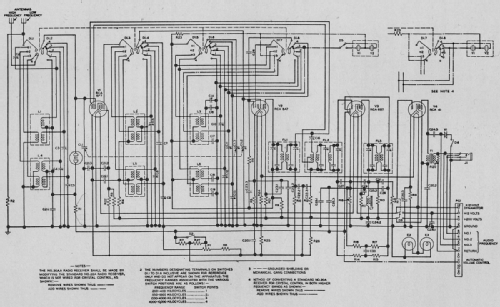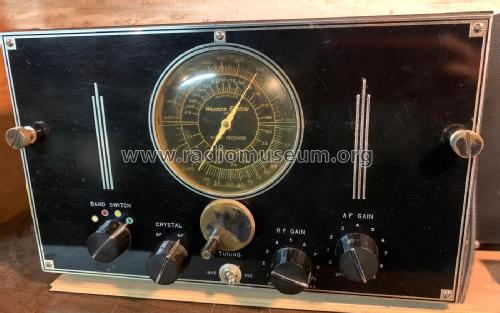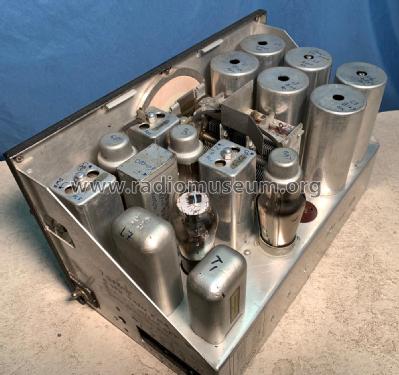20A aircraft receiver base station version
Western Electric Company Inc.; New York (NY)
- Land
- USA
- Hersteller / Marke
- Western Electric Company Inc.; New York (NY)
- Jahr
- 1936 ?
- Kategorie
- Amateur-Empfänger (Amateur-Bänder, zudem auch Rundfunkbänder möglich)
- Radiomuseum.org ID
- 314656
Klicken Sie auf den Schaltplanausschnitt, um diesen kostenlos als Dokument anzufordern.
- Anzahl Röhren
- 4
- Hauptprinzip
- Super, ZF mit Rückkopplung; ZF/IF 96 kHz; 2 NF-Stufe(n)
- Anzahl Kreise
- 2 Kreis(e) AM
- Wellenbereiche
- Langwelle, Mittelwelle und zwei mal Kurzwelle.
- Betriebsart / Volt
- Externes Speisegerät / Netzgerät / Hauptgerät / 200 vdc & 12 vdc Volt
- Lautsprecher
- - Für Kopfhörer oder NF-Verstärker
- Material
- Metallausführung
- von Radiomuseum.org
- Modell: 20A aircraft receiver [base station version] - Western Electric Company Inc.;
- Form
- Diverse Formen, unter Bemerkung beschrieben.
- Abmessungen (BHT)
- 13 x 8 x 9 inch / 330 x 203 x 229 mm
- Bemerkung
-
Amelia Earhart used this model aircraft radio receiver on her ill-fated 1937 flight from New Guinea to Howland Island in the Pacific. It was available in the base station configuration you see here. With the face plate removed, a mechanism could be installed that made it possible to control the radio from the cockpit by mechanical remote control. Some say that the shortcomings of this radio contributed to the failure of the flight.
The manufacturer's intention was to create a radio that was compact and light weight. They did several things to accomplish this. They used a 6F7 dual function tube that served as both an RF and IF amplifier. They included regeneration to increase gain. They used a 6B7 tube that served four functions (IF amplifier, 2nd detector, AVC), then after demodulation the audio signal was passed through the tube again for amplification. The circuit was very compact and difficult to trace and troubleshoot. The compactness could lead to internal feedback problems.
The output was through headphones and required two antennas. (high and low frequencies). The output tube was a type 41. The power requirement was 200 VDC and 12 VDC provided by a generator run by one of the engines.
The case is a rectangular aluminum box (removed in photos).
- Nettogewicht
- 15 lb (15 lb 0 oz) / 6.810 kg
- Literatur/Schema (2)
- - - Manufacturers Literature
- Autor
- Modellseite von Ron Boucher angelegt. Siehe bei "Änderungsvorschlag" für weitere Mitarbeit.
- Weitere Modelle
-
Hier finden Sie 171 Modelle, davon 150 mit Bildern und 32 mit Schaltbildern.
Alle gelisteten Radios usw. von Western Electric Company Inc.; New York (NY)
Sammlungen
Das Modell 20A aircraft receiver befindet sich in den Sammlungen folgender Mitglieder.


